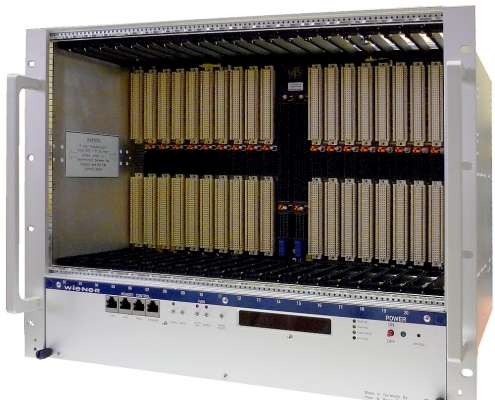VME Crates
A high speed and high-performance bus system with powerful interrupt management and multiprocessor capability. It was created by combining VERSAbus electrical specifications (1979) with the Eurocard format resulting in the VMEbus Revision A – 1981 specification. The VMEbus specification has since then been refined through revisons B (1982), C, C.1, IEC 821 & IEC297 and IEEE 1014-1987.
VME represents one of today’s most used industry bus standards (see VMEbus International Trade Association – VITA).
VERSAbus and consequently VMEbus were originally based on the MOTOROLA MC 680×0 architecture, i.e. it is a master-slave computer architecture with 32 bit wide Address and Data buses and is using an asynchronous transfer principle. The VME64 extension doubles the transfer rate by simultaneously using both the 32 address and the 32 data lines multiplexed for 64 bit wide for data transfers (D64). Data transfer rates are up to 40 and 80 Mbyte/sec for D32 and D64, respectively. ANSI / VITA 1-1994.
The mechanical design is based on the Eurocard form factor. Standard VME modules are 6U high and 160mm deep. For Physics instrumentation a 9U x 400m form factor was added. All VME modules are equipped with two 3-row DIN-96 pin type connectors P1/P2 which match the backplane connectors J1/J2. VME crates have up to 21 slots and are equipped with the VME bus (backplane). Standard Voltages provided by the crate power supply to the backplane are +5V and +/-12V, (5VSTBY)
圖片僅供參考
產品可依客戶需求進行客制




